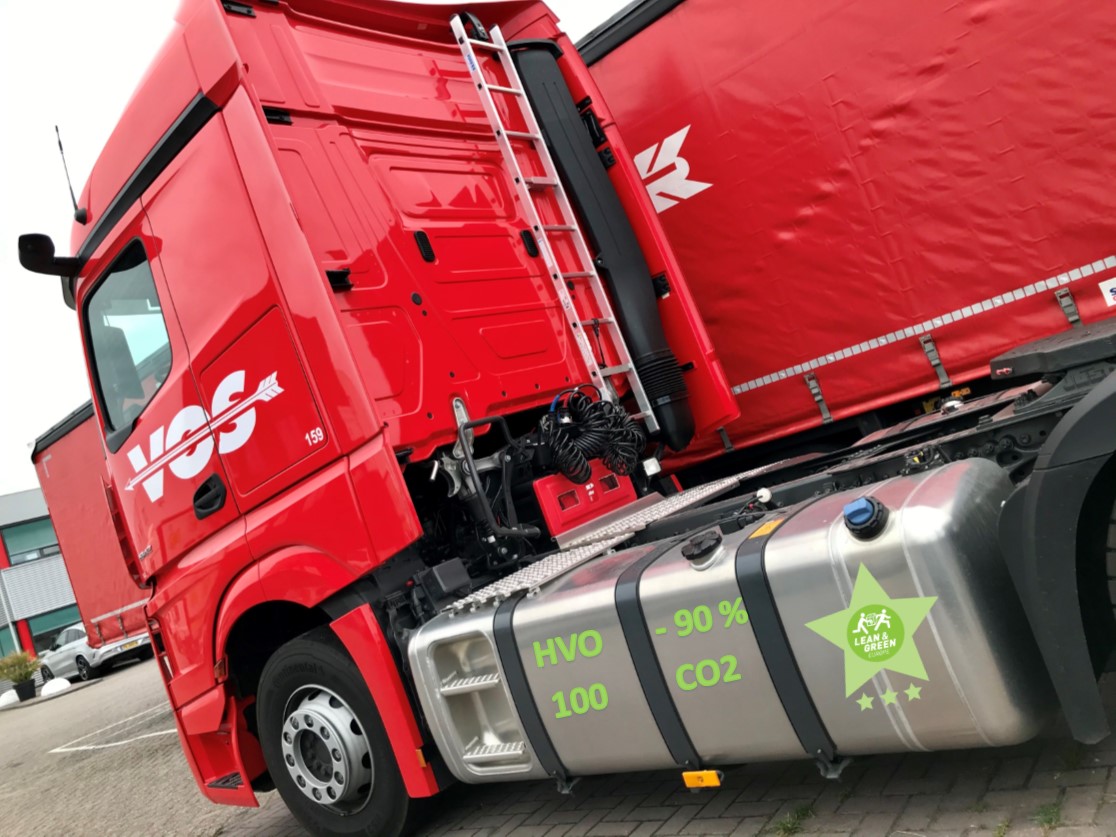Sustainable fuels
VOS Transport was one of the first road transporters in Europe to receive the 3rd Lean & Green Star and we have the ambition to be the first to achieve the 4th Star. ‘Leading the way in sustainability’ is our slogan and we realize better than anyone that this is done together. The use of sustainable fuels in our transports is an important part of this.
Which sustainable fuels do we use?
We currently use LNG, GTL and HVO100 to reduce emissions from our fleet and your shipments. In addition to being very active in hydrogen-related projects, we also looked for an interim solution. It will take a few more years before we can make large-scale use of hydrogen in our fleet. Until then, we have found a good solution in the form of HVO100. We can already use this sustainable fuel on a large scale and with the use of this sustainable diesel we can achieve a certified CO2 reduction of 90%. In addition to this reduction, the use of HVO100 also has lower emissions of harmful emissions such as fine dust, hydrocarbons, nitrogen oxides, carbon monoxide and PAHs. This has a positive effect on local air quality.

What is HVO100?
The abbreviation HVO stands for ‘Hydrotreated Vegetable Oil’. This type of diesel fuel is produced based on hydrotreated vegetable oils and residual waste, such as animal fats. The number ‘100’ behind HVO indicates that it concerns a sustainable diesel of high quality in the purest form (100%), not mixed. We can obtain a certificate from our supplier with which you can substantiate the CO2 savings on your shipments for the authorities necessary.

Make your transport sustainable
Of course, the use of HVO100 has a cost-increasing factor, but we can keep this very limited with custom solutions. In short: why wait with a large-scale reduction of CO2 emissions if we can already start now? Be a frontrunner and contact our specialists to find out exactly what we can do for you.
Do you think the reduction of 90% is not yet sufficient? Then we offer the opportunity to compensate this last 10% with our compensation program.


